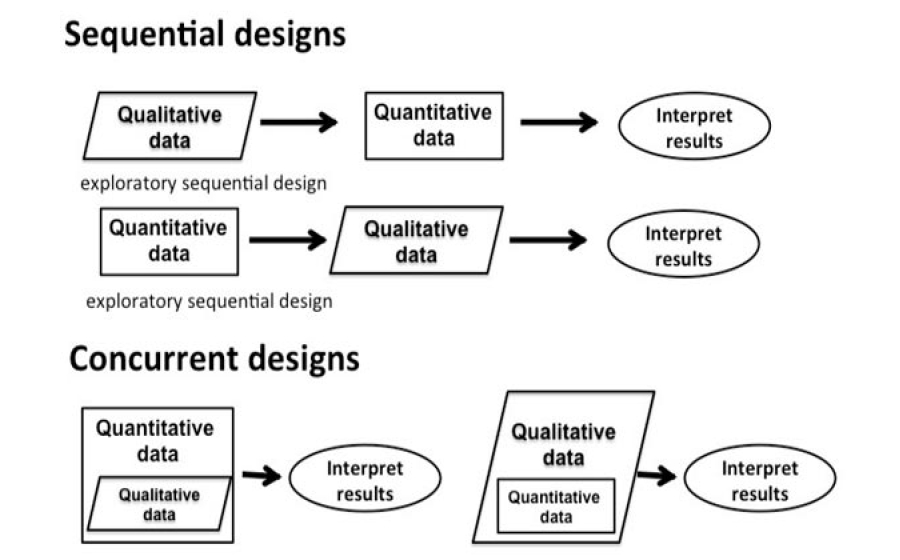Mixed Methods Applications: Illustrations
-
Academic Program Finder
-
Master's Degrees
- MSPH in Population, Family and Reproductive Health
- Master of Applied Science (MAS) in Patient Safety and Healthcare Quality
- Master of Applied Science (MAS) in Population Health Management
- Master of Applied Science (MAS) in Spatial Analysis for Public Health
- Master of Arts and Master of Science in Public Health (MA/MSPH)
- Master of Arts in Public Health Biology (MAPHB)
- Master of Bioethics (MBE)
- Master of Health Administration (MHA)
- Master of Health Science (MHS) - Department of Biochemistry and Molecular Biology
- Master of Health Science (MHS) - Department of Epidemiology
- Master of Health Science (MHS) - Department of Mental Health
- Master of Health Science (MHS) - Department of Molecular Microbiology and Immunology
- Master of Health Science (MHS) in Health Economics and Outcomes Research
- Master of Health Science (MHS) in Health, Behavior and Society
- Master of Health Science (MHS)
- Master of Health Science - Department of Biostatistics
- Master of Health Science - Department of Population, Family and Reproductive Health
- Master of Health Science in Global Health Economics
- Master of Public Health (MPH)
- Master of Science (ScM) - Department of Biochemistry and Molecular Biology
- Master of Science (ScM) - Department of Biostatistics
- Master of Science (ScM) - Department of Epidemiology
- Master of Science (ScM) - Department of Molecular Microbiology and Immunology
- Master of Science (ScM) in Genetic Counseling
- Master of Science in Public Health (MSPH) in Health Education and Health Communication
- Master of Science in Public Health (MSPH) in Health Policy
-
Master of Science in Public Health - Department of International Health
- Master of Science in Public Health (MSPH) in Global Disease Epidemiology and Control
- Master of Science in Public Health (MSPH) in Health Systems
- Master of Science in Public Health (MSPH) in Human Nutrition
- Master of Science In Public Health (MSPH) In Human Nutrition – Dietitian
- Master of Science in Public Health (MSPH) in Social and Behavioral Interventions
-
Doctoral Degrees
- Doctor of Philosophy (PhD) - Department of Biochemistry and Molecular Biology
- Doctor of Philosophy (PhD) - Department of Biostatistics
- Doctor of Philosophy (PhD) - Department of Epidemiology
- Doctor of Philosophy (PhD) - Department of Mental Health
- Doctor of Philosophy (PhD) - Department of Molecular Microbiology and Immunology
- Doctor of Philosophy (PhD) - Department of Population, Family and Reproductive Health
- Doctor of Philosophy (PhD) in Clinical Investigation
- Doctor of Philosophy (PhD) in Health Policy and Management
- Doctor of Philosophy (PhD) in Social and Behavioral Sciences
- Doctor of Philosophy - Department of International Health
- JHU-Tsinghua Doctor of Public Health
- Doctor of Public Health (DrPH)
- Combined / Dual Degrees
-
Certificate Programs
- Adolescent Health Certificate Program
- Bioethics Certificate Program
- Clinical Trials Certificate Program
- Community- Based Public Health Certificate Program
- Demographic Methods Certificate Program
- Epidemiology for Public Health Professionals Certificate Program
- Evaluation: International Health Programs Certificate Program
- Frequently Asked Questions for Certificate Programs
- Gender and Health Certificate Program
- Gerontology Certificate Program
- Global Digital Health Certificate Program
- Global Health Certificate Program
- Global Health Practice Certificate Program
- Health Communication Certificate Program
- Health Disparities and Health Inequality Certificate Program
- Health Education Certificate Program
- Health Finance and Management Certificate Program
- Healthcare Epidemiology and Infection Prevention and Control Certificate Program
- Humanitarian Health Certificate Program
- Implementation Science and Research Practice Certificate Program
- Injury and Violence Prevention Certificate Program
- Leadership for Public Health and Healthcare Certificate Program
- Lesbian, Gay, Bisexual, Transgender, and Queer (LGBTQ) Public Health Certificate Program
- Maternal and Child Health Certificate Program
- Mental Health Policy, Economics and Services Certificate Program
- Non-Degree Students General Admissions Info
- Pharmacoepidemiology and Drug Safety Certificate Program
- Population Health Management Certificate Program
- Population and Health Certificate Program
- Public Health Advocacy Certificate Program
- Public Health Economics Certificate Program
- Public Health Informatics Certificate Program
- Public Health Training Certificate for American Indian Health Professionals
- Public Health, Human Rights, and the Law Certificate Program
- Public Mental Health Research Certificate Program
- Quality, Patient Safety and Outcomes Research Certificate Program
- Requirements for Successful Completion of a Certificate Program
- Rigor, Reproducibility, and Responsibility in Scientific Practice Certificate Program
- Risk Sciences and Public Policy Certificate Program
- Social Epidemiology Certificate Program
- Spatial Analysis for Public Health Certificate Program
- Training Certificate in Public Health
- Tropical Medicine Certificate Program
- Tuition for Certificate Programs
- Vaccine Science and Policy Certificate Program
- Online Programs
- Accelerated Learning Institutes
- Postdoctoral Programs
- Residency Programs
- Graduate Training Programs in Clinical Investigation
- For Working Professionals
-
Training Grants
-
Mixed Methods Research Training Program for the Health Sciences
- About the Program
- Announcements
- Application Process
- Contact Us
-
Current Scholars
-
2015 Scholars
- Jennifer I Manuel, PhD, MSW
- Joke Bradt, PhD
- Josiemer Mattei, PhD, MPH
- Justin Sanders, MD, MSc
- Linda Charmaran, PhD
- Nao Hagiwara, PhD
- Nynikka R. A. Palmer, DrPH, MPH
- Olayinka O. Shiyanbola, BPharm, PhD
- Sarah Ronis, MD, MPH
- Susan D. Brown, PhD
- Tara Lagu, MD, MPH
- Theresa Hoft, PhD
- Wynne E. Norton, PhD
- Yvonne Mensa-Wilmot, PhD, MPH
-
2016 Scholars
- A. Susana Ramírez, PhD, MPH
- Animesh Sabnis, MD, MSHS
- Autumn Kieber-Emmons, MD, MPH
- Benjamin Han, MD, MPH
- Brooke A. Levandowski, PhD, MPA
- Camille R. Quinn, PhD, AM, LCSW
- Justine Wu, MD, MPH
- Kelly Aschbrenner, PhD
- Kim N. Danforth, ScD, MPH
- Loreto Leiva, PhD
- Marie Brault, PhD
- Mary E. Cooley, PhD, RN, FAAN
- Meganne K. Masko, PhD, MT-BC/L
- PhuongThao D. Le, PhD, MPH
- Rebecca Lobb, ScD, MPH
-
2017 Scholars
- Allegra R. Gordon, ScD MPH
- Anita Misra-Hebert, MD MPH FACP
- Arden M. Morris, MD, MPH
- Caroline Silva, PhD
- Danielle Davidov, PhD
- Hans Oh, PhD
- J. Nicholas Dionne-Odom, PhD RN ACHPN
- Jacqueline Mogle, PhD
- Jammie Hopkins, DrPH, MS
- Joe Glass, PhD MSW
- Karen Whiteman, PhD MSW
- Katie Schultz, PhD MSW
- Rose Molina, MD
- Uriyoán Colón-Ramos, ScD MPA
-
2018 Scholars
- Andrew Riley, PhD
- Byron J. Powell, PhD, LCSW
- Carrie Nieman MD, MPH
- Charles R. Rogers, PhD, MPH, MS, CHES®
- Emily E. Haroz, PhD
- Jennifer Tsui, Ph.D., M.P.H.
- Jessica Magidson, PhD
- Katherine Sanchez, PhD, LCSW
- Kelly Doran, MD, MHS
- Kiara Alvarez, PhD
- LaPrincess C. Brewer, MD, MPH
- Melissa Radey, PhD, MA, MSSW
- Sophia L. Johnson, PharmD, MPH, PhD
- Supriya Gupta Mohile, MD, MS
- Virginia McKay, PhD
-
2019 Scholars
- Andrew Cohen, MD, PhD
- Angela Chen, PhD, PMHNP-BC, RN
- Christopher Salas-Wright, PhD, MSW
- Eliza Park MD, MS
- Jaime M. Hughes, PhD, MPH, MSW
- Johanne Eliacin, PhD, HSPP
- Lingrui Liu ScD MS
- Meaghan Kennedy, MD
- Nicole Stadnick, PhD, MPH
- Paula Aristizabal, MD
- Radhika Sundararajan, MD
- Sara Mamo, AuD, PhD
- Tullika Garg, MD MPH FACS
-
2020 Scholars
- Allison Magnuson, DO
- Ariel Williamson PhD, DBSM
- Benita Bamgbade, PharmD, PhD
- Christopher Woodrell MD
- Hung-Jui (Ray) Tan, MD, MSHPM
- Jasmine Abrams, PhD
- Jose Alejandro Rauh-Hain, MD
- Karen Flórez, DrPH, MPH
- Lavanya Vasudevan, PhD, MPH, CPH
- Maria Garcia, MD, MPH
- Robert Brady, PhD
- Saria Hassan, MD
- Scherezade Mama, DrPH
- Yuan Lu, ScD
- 2021 Scholars
-
2015 Scholars
- Resources
- Sign Up for Our Email List
-
Mixed Methods Research Training Program for the Health Sciences
-
Master's Degrees
- Course Directory
- Academic Calendar
- Hybrid Campus
- Convocation
- Lecture Series
Integration in Mixed Methods Research

Integration means bringing the quantitative and qualitative strands of a mixed methods study together for analysis and comparison, or for one strand of the data collection and analysis to inform the other. Often investigators discuss the integration in the text of manuscripts but joint displays of the data may provide another way to integrate the study strands.
A joint display brings quantitative data together with themes or analysis derived from qualitative data.
Understanding Basic Mixed Methods Designs

How the "mix" of quantitative and qualitative "strands" is configured in a particular study must be justified by the goals of the study and the questions to be answered by the research. Sequential designs (exploratory and explanatory sequential designs) have data collection performed in sequence, so that the results of one strand influence the data collection for the next strand. In concurrent designs the data collection for the strands are embedded in one another, often with one method being primary.
In an exploratory sequential design, qualitative data is collected prior to the collection of quantitative data. This type of design is likely to be familiar to many investigators as it is commonly used as a strategy to design an instrument or questionnaire or to gather information to guide the content of an intervention (e.g. focus group: a guided discussion that systematically investigates what a diverse group of people think of a set of research questions).
An alternative to the exploratory sequential design is the explanatory sequential design in which the quantitative data collection comes first, followed by qualitative data collection. Investigators who select this design often do so because there is some need for an explanation of the quantitative findings from study participants.
In some cases, the research questions or circumstances of the research settings require that the data collection is essentially concurrent, often referred as “embedding” one strand in another, typically with one strand dominating. For concurrent designs, less emphasis is placed on how one strand informs the next, and more on making inference or drawing conclusions from the concurrent strands.
Basic mixed methods designs that deploy qualitative and quantitative methods sequentially or concurrently (Adapted from (J. W. Creswell & Plano Clark, 2011)).
Mixed Methods in Intervention Research

Mixed methods may be valuable throughout the development and testing of interventions - in the development of the intervention, during the evaluation of the intervention, and after the follow-up and assessment of outcomes is completed. Qualitative approaches are most frequently used to develop an instrument, to understand strategies for successful recruitment, to find areas for intervention adaptation, to understand the processes of an intervention, to evaluate fidelity and other implementation factors, to explain outcomes, to provide feedback to improve intervention, and to understand mediators and moderators.
Traditional efficacy and effectiveness clinical trials focus on improving individual-level clinical and functional outcomes. For example, the National Institute of Mental Health (NIMH) is leading the efforts to move towards an "experimental medicine approach" that generates knowledge about 'mechanisms' underlying a disorder or a service use pattern (Insel, 2014). An emphasis is on understanding mechanisms and designing studies in such a way that even if an intervention has minimal effects, it will be possible to inform future improvements or modifications to the intervention (O'Cathain, Murphy, & Nicholl, 2007). Mixed methods are essential to achieving these objectives as it is no longer tenable for an investigator to only answer the question, "does this work?" The investigator must also be prepared to address the questions of "why didn't this work?," "why didn't this work for this group?," and "why didn't this intervention reach the people for whom it was intended?"
More detailed information can be found in Gallo, J.J. & Lee, S.Y. Mixed Methods in Behavioral Intervention Research, in Gitlin, L.N. & Czaja, S.J. (Editors). Behavioral Interventions: Designing, Evaluating and Implementing. Springer Publishing Company, New York, in press.
The role and timing of using quantitative and qualitative approaches in randomized clinical trials (adapted from Sandelowski (Sandelowski, 1996)).
